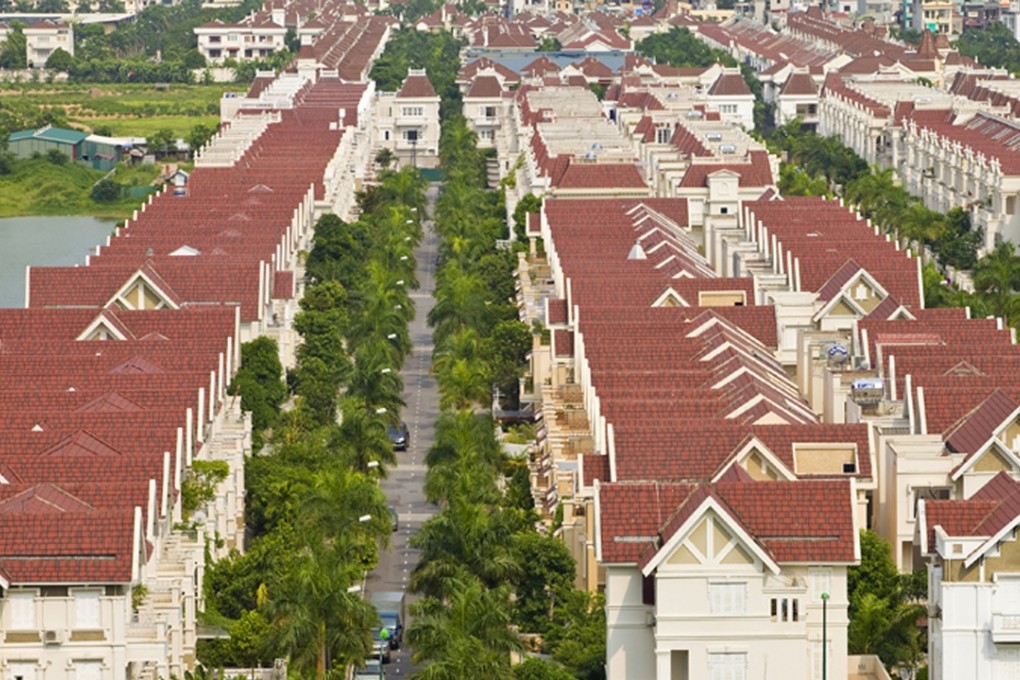How the rich live in Hanoi: gated communities, golf, and a gulf between them and rest of city
Vast, privately managed ‘new towns’ and walled-off, self-enclosed communities are springing up as Vietnam’s wealth gap widens. Farmers whose land is swallowed up are the big losers

The multibillion-dollar Ciputra International City complex, in northwest Hanoi, covers 300 hectares of former farmland with mansions, private schools, a clubhouse and fine wine store. Surrounded by thick concrete walls and guarded gates, it is a private enclave of ostentatious wealth – a paradise for the Vietnamese capital’s expatriate and local elite. Inside the gates, wide roads are flanked by luxury cars, palm trees and giant statues of Greek gods.
Across the city, work is under way at Ecopark, a grand, US$8 billion private development being built on the eastern edge of Hanoi. Set to be completed in 2020, it promises secluded luxury with a private university, purpose-built “old town” and 18-hole golf course among the amenities planned. The first phase of the development, named Palm Springs – after the California desert resort city famous for hot springs, golf courses and five-star hotels – has just been completed.
Gated communities and vast, privately built and managed “new towns” such as these have spread across southeast Asia over the last 20 years as rising levels of inequality have redefined the region’s cities. Vietnam as a whole has seen a dramatic reduction in poverty over the same period – but inequality is growing, and becoming increasingly marked in the country’s expanding urban areas.

“This side is just ordinary people. Over there, they are rich,” says Mien, 59, who like Lam runs a small business out of her home selling tea, cigarettes and bottles of water and soft drinks. Small plastic stools are scattered on the pavement in front of her one-room house. Between customers she lounges on her bed, a wire frame with no mattress. “Over here we have just enough to live on,” she says.
This side is just ordinary people. Over there, they are rich ... Over here we have just enough to live on
Across Vietnam, the percentage of people living in extreme poverty has fallen from nearly 60 per cent to just over 20 per cent in the past 20 years. In 2010, the World Bank reclassified it as a “middle-income” country. But as Vietnam has liberalised its economy, so the number of extremely wealthy citizens has skyrocketed. By one estimate, the number of super-rich – those with assets of more than US$30 million – more than tripled in the last 10 years.